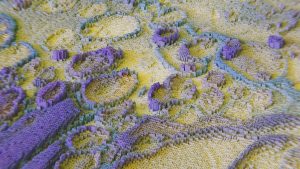What different subcultures have contributed to mainstream fashion
Mainstream fashion has always been influenced by various subcultures throughout history. From punk rock to hip hop, these subcultures have left lasting impressions and continue to shape the ever-evolving fashion industry. Each subculture brings its own unique style and perspective, pushing boundaries and challenging traditional norms. In this article, we will explore some of the different subcultures that have contributed to mainstream fashion and how their influence can still be seen today.
Punk Rock
Punk rock emerged in the 1970s as a subculture that rebelled against societal norms and rejected mainstream culture. This movement was characterized by its anti-establishment attitude and DIY ethos, which translated into bold fashion choices. Punk fashion was all about self-expression and breaking away from traditional conventions.
Key Elements of Punk Fashion
One of the most iconic looks of punk fashion is the leather jacket, typically adorned with studs and pins, giving it a rebellious edge. Safety pins were also a staple accessory, often used to hold together ripped and torn clothing. The staple leather jacket was usually paired with ripped jeans, band t-shirts, and combat boots, completing the punk rock aesthetic.
Influence in Mainstream Fashion
Today, elements of punk fashion can be seen on the runway and in mainstream stores. The rebellious, anti-conformist attitude of punk has translated into bold and edgy styles in fashion. Ripped jeans, band t-shirts, and leather jackets have become mainstream staples, with designers and brands putting their own spin on these classic punk looks.
Hip Hop
In the 1970s, hip hop emerged as a cultural movement in the Bronx, New York. It was a subculture that celebrated self-expression through music, dance, and fashion. Hip hop fashion was born out of the streets and influenced by urban street style.
Key Elements of Hip Hop Fashion
Baggy clothes, oversized t-shirts, and tracksuits were all popular looks in hip hop fashion. The style was heavily influenced by athletic wear, with brands like Adidas and Nike becoming synonymous with the hip hop scene. Accessories like chains, large hoop earrings, and chunky jewelry were also essential elements of hip hop fashion.
Influence in Mainstream Fashion
Hip hop fashion has had a huge impact on mainstream fashion, with streetwear becoming a major trend. Tracksuits, oversized t-shirts, and athletic wear have all become popular pieces in mainstream fashion, thanks to hip hop’s influence. Luxury fashion brands like Gucci and Louis Vuitton are now collaborating with streetwear brands, showing the impact hip hop has had on the industry.
Goth
Goth culture emerged in the 1980s, influenced by elements of punk, post-punk, and romanticism. Goth fashion is known for its dark, mysterious, and macabre aesthetic. It is an expression of individuality and often associated with themes of horror, death, and the supernatural.
Key Elements of Goth Fashion
The goth aesthetic is characterized by black clothing, heavy makeup, and dark accessories. Corsets, lace, and leather are all popular elements of goth fashion, along with platform boots and Victorian-inspired pieces. The overall look is often dramatic and theatrical, with a focus on creating a sense of mystery and intrigue.
Influence in Mainstream Fashion
Elements of goth fashion can be seen today in the popularity of all-black outfits and dark, edgy accessories. Dark, romantic styles have also been embraced by high fashion brands, with collections featuring gothic influences. Goth fashion is all about pushing boundaries and creating a statement, and this is something that continues to resonate in mainstream fashion.
Conclusion
Subcultures have played a significant role in shaping mainstream fashion. From punk to hip hop and goth, their influence can still be seen today in industry trends and styles. These subcultures have challenged traditional norms and pushed for self-expression, leaving a lasting impact on the fashion world. The continued influence of these subcultures only proves that fashion is a constantly evolving art form, shaped by different cultures and movements.










